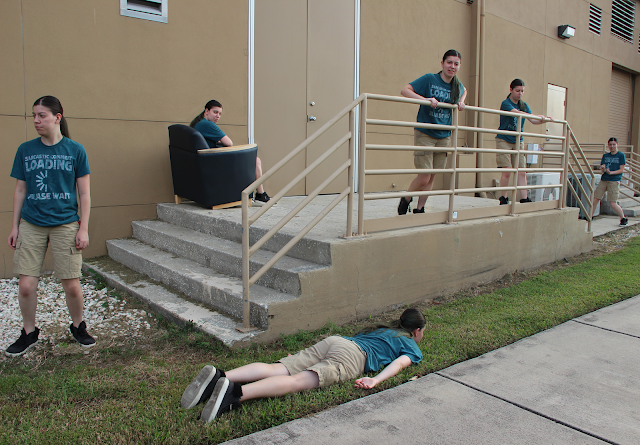 |
| The finished restoration. |
The goal for this project was restoring a worn-down photo and making it look brand new (well, as "brand new" as you can make an old, pixelated sepia-tone photo look). I didn't get to use a photo from my own family, primarily because I was surprised to learn that none of the several family members I asked had any old photos that I could use, so instead I went with one of the examples in the class folder... and, you know, I think I've honestly gotten attached to them. I have no idea who they're supposed to be, but editing them for so long has made me feel a sort of bizarre kinship towards this family. I'd like to think the second guy from the right would be cool to talk to.
The big tools for this project were the spot healing brush and the clone stamp tool. The spot healing brush was... alright? It's a genius tool in concept, but in practice it didn't help very much for the assignment. I mostly used the default "Content Aware" setting, as "Create Texture" was too harsh and "Proximity Match" was very hit-and-miss with where it drew color from. Even then, though, the spot healing brush smoothed out a lot of the grain and pixelation in the photo, which I ended up having to fix later. The Clone Stamp tool, on the other hand, was extremely useful, and I had a lot of fun pulling from different sources of the photo to recreate missing pieces of the photo. It's like the modern Frankenstein's monster... if, well, Frankenstein's monster looked more convincing and not like a freakish chimera of a man. I also got to use the Dodge and Burn tools a lot more compared to the Multiplicity assignment, and I think it really helped make the figures in the photo stand out more.
 |
| A comparison between the original, damaged photo and the final product. Big difference! |
Overall, I'm pretty happy with the results of this restoration. It was a bit challenging figuring out the division between nailing for an accurate recreation and sacrificing limitations of the photo-creation process in order to create something that looks more modern, but I think I hit a happy medium between the two. Here's to hoping the next project will be just as entertaining!



